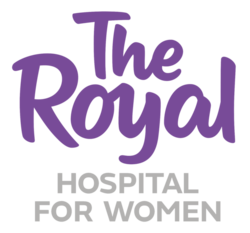Clinical Governance
At the Royal Hospital for Women, we strive to always provide care that is
safe and effective.
The key features of a robust patient quality and safety framework include:
- The consumer is the primary focus - Patient Centred Care
- A commitment from all levels of the hospital to patient quality and safety and not from just a few individuals
- That providers of care concentrate on interventions that are safe, effective and appropriate
- That there is widespread support for patient quality and safety across the whole organisation. This means that EVERY Division in the Hospital has a clearly defined Quality and Safety Program and has personnel with protected time for quality and safety and that these accountabilities are included in their position statements.
- That this commitment is backed up with RESOURCES and ACTIONS and that as a consequence there is safer and higher quality patient care
- That in essence, each Division accepts that they are accountable for operationalising a quality and safety programme.
- That Divisional and Department activities are supported by centralised hospital units - Clinical Practice Improvement Unit (CPIU) with dedicated experienced personnel in the field of patient quality and safety.
The vision for RHW is to have a combination of full time and part time staff, throughout ALL levels of the hospital, actively involved with patient quality and safety.
Critical to operationalising an effective Quality and Safety Program is an organisational structure that supports the development, implementation, operation and evaluation of the Program.
At RHW there are four (4) main elements to the hospital?s Quality and Safety Program;
- Clinical Practice Improvement Unit (CPIU)
- Divisional Quality and Safety Programs
- Committee Structure:
- Quality and Patient Safety Committee
- Divisional Quality and Safety Committees
- The CPIU has a full-time Manager that reports to the RHW General Manager.
- There is also a reporting relationship to the South Eastern Sydney Local Health District (SESLHD) Director of Clinical Governance.
- The CPIU is responsible for:
- Overall Hospital Quality and Safety Program
- Setting the strategic direction of the Quality and Safety Program
- Coordination of programs across hospital / between Divisions
- Implementing, in partnership with Divisional personnel, the facilities? Quality and Safety Programme
- Providing / coordinating education and ongoing support to each Department/Division
- Coordinating and liaising with the District Clinical Governance Unit
- Ensuring collection, monitoring and action on ACHS Clinical Indicators
- Supporting the hospital?s Quality and Safety Committee and Patient Care Committee
- Overall responsibility for ACHS NSQHS Standards 2nd Edition
- Incident management, in collaboration with divisional co-directors.
- Complaints management
The introduction in early 2010, of a decentralised (divisional) organisational structure to RHW has enabled the hospital to implement patient quality and safety programs close to where patients are cared for and treated, which is ideal.
The Quality and Safety agenda is a full one. To ensure that we move forward there is a requirement that EVERY Division will have a Patient Quality and Safety Program.
Features of a Divisional Quality and Safety Program include:
- Identified personnel with protected time who have overall responsibility and accountability for Quality and Safety for the Division
- Regular Divisional Patient Quality and Safety meetings
- Monitoring of adverse/trigger events
- Monitoring of clinical care and regular clinical audits
- Implementation of the activities as outlined in the Clinicians Toolkit eg Morbidity and Mortality Meetings, Clinical Audit etc
- Implementation of the NSW Quality Framework
- Divisional ACHS NSQHS Standards 2nd Edition preparation
At Divisional level that there are part time medical, nursing and other personnel (technical, administrative, scientific and/or allied health - depending on Department/Team/Divisional staffing profile) with specific accountabilities and responsibilities for quality and safety.
Each division has developed a suite of trigger events which are reviewed to ensure that clinical care was appropriate or to identify opportunities for improvement. The Maternity program complies with the NSW Health PD2009_003 Maternity Risk Management Program.
Each division has established a Quality and Safety Committee that reports to the RHW Patient Safety and Quality Committee.
There is one peak hospital-wide Committee that support the RHW Quality and Safety Framework.
Quality and Patient Safety Committee
The Quality and Patient Safety Committee is the peak committee that deals with the dimensions of quality including: Access, Efficiency, Appropriateness, Effectiveness and Consumer input. The committee also includes responsibility for liaising and co-ordinating with National and State groups on patient quality and safety initiatives.
This Committee reports to the RHW Clinical Council
Divisional Quality and Patient Safety Committees
Each division has established a Divisional Quality and Patient Safety Committee to assist the Divisions in discharging their clinical governance responsibilities.
Divisional Patient Quality and Safety Committees report to the RHW Quality and Patient Safety Committee.
CPIU is the conduit for comments, compliments and complaints from patients and their families.
Complaints are received directly verbally, in person or by telephone, in writing or via external organisations such as the Health Care Complaints Commission or Ministry of Health. There is also Patient Opinion for online feedback and is available on the hospital website.
All complaints are acknowledged, investigated, responses sent within the agreed timeframe and presented for discussion at Quality & Patient Safety Committee.
Increasing community expectations with regard to the quality and safety of patient care are increasingly being reflected with interventions from State and National levels of government, with the outcome being the requirement for health services to have robust patient quality and safety programmes in place.
This is resulting in a change to what has traditionally been viewed as our prime responsibility to the community ? that is the triad of responsibilities of Patient Care, Teaching and Research to include a forth dimension ? that is the provision of safe quality patient care.
This will require personnel at all levels to contribute to ensuring the success of the RHW Patient Quality and Safety Programme.
